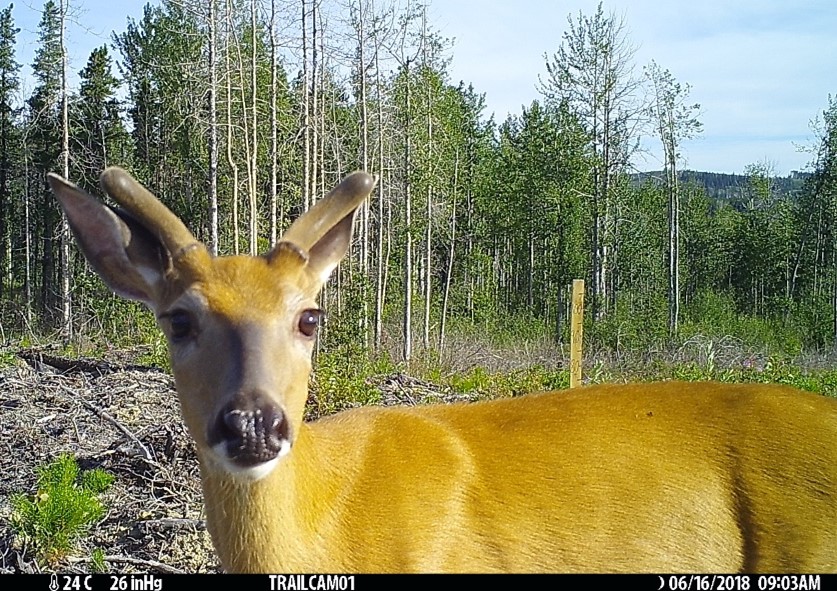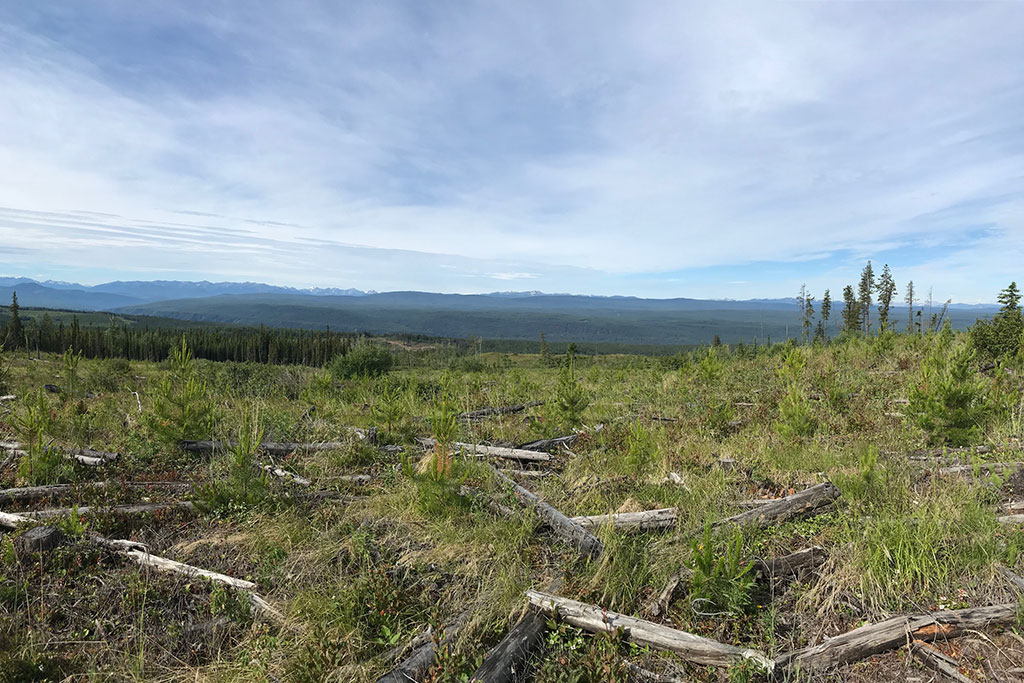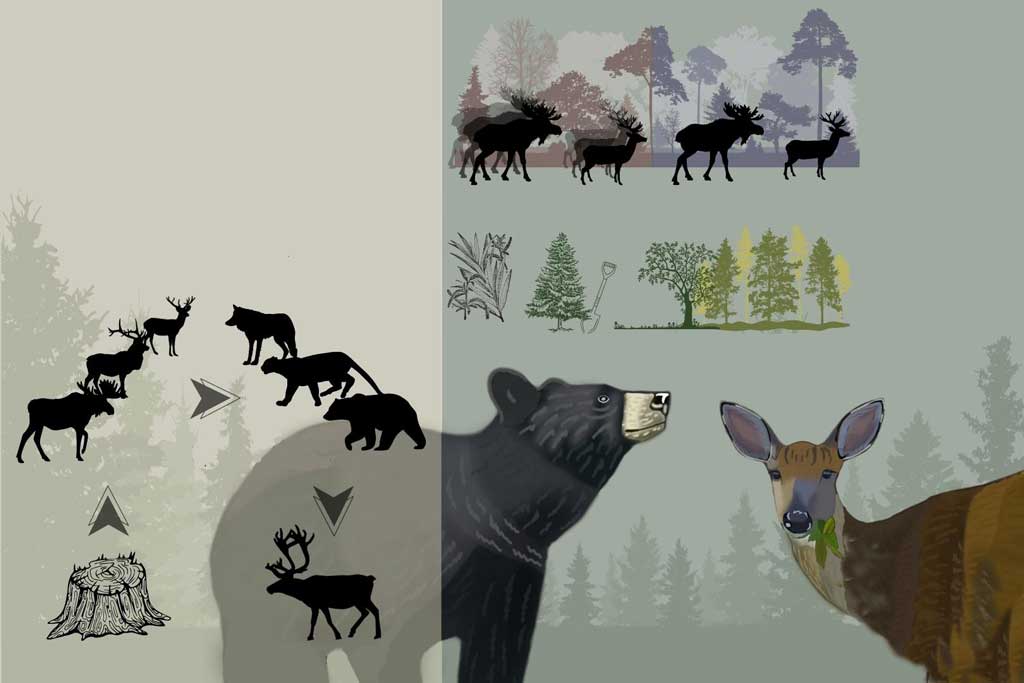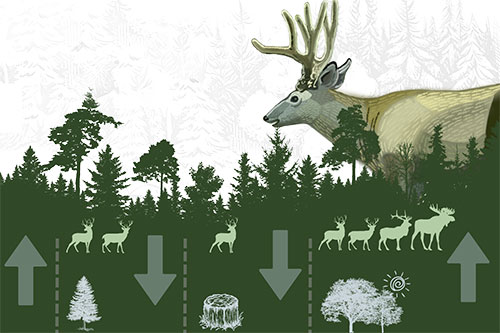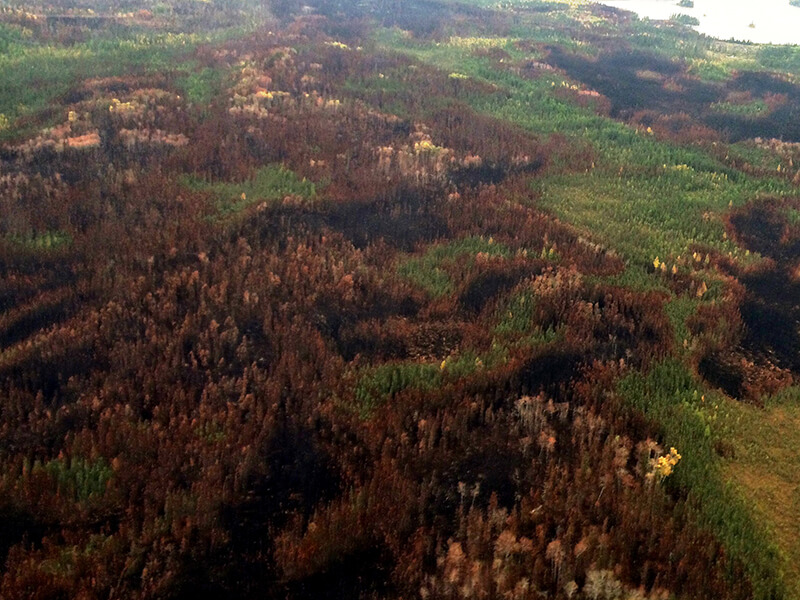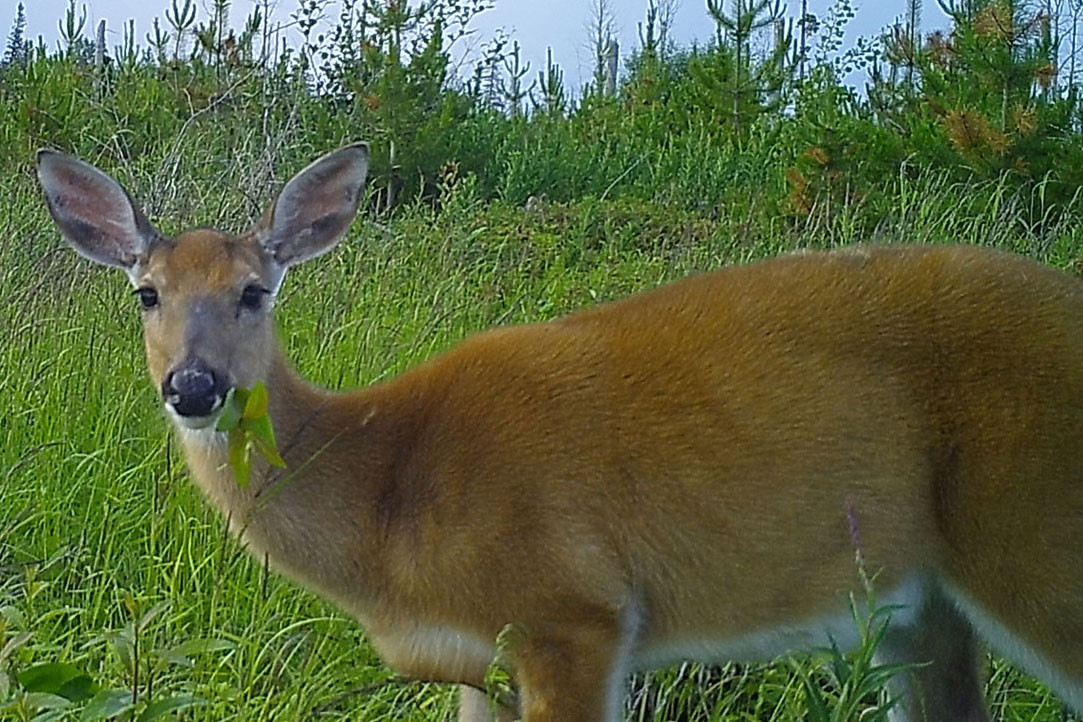
Abstract
Forest harvesting alters habitat, impacts wildlife, and disrupts ecosystem function. Across the boreal forest of Canada, forest harvesting affects ungulate prey species and their predators, with cascading impacts on other species, including threatened woodland caribou. We used camera and vegetation data and occupancy modeling to investigate what characteristics in and around forestry harvest blocks influenced the occupancy and co-occurrence of primary prey (elk, moose, mule deer, white-tailed deer) and predators (black bear, cougar, grizzly bear, wolf) in harvest blocks. Occupancy was linked to forage, the surrounding habitat and anthropogenic disturbance, and silviculture practices. Black and grizzly bear occupancy was influenced by the presence of deer, and bear–deer co-occurrence was influenced by site-specific silviculture practices and surrounding anthropogenic disturbance. In the context of caribou recovery, our results indicate that forestry within caribou ranges could consider site-specific silviculture practices and landscape-level planning to reduce use of harvest blocks by primary prey. Future caribou recovery efforts may also consider the roles of deer and bears in caribou predation risk. Our study provides the first insights into the impacts of forestry and silviculture on boreal forest predator–prey co-occurrence and provides practical management applications to mitigate the impacts of anthropogenic activities on the boreal forest ecosystem into the future.
Read the full paper here (open access).
Citation
McKay, T. L., & Finnegan, L. A. (2022). Predator–prey co-occurrence in harvest blocks: Implications for caribou and forestry. Conservation Science and Practice, 4( 12), e12847. https://doi.org/10.1111/csp2.12847







